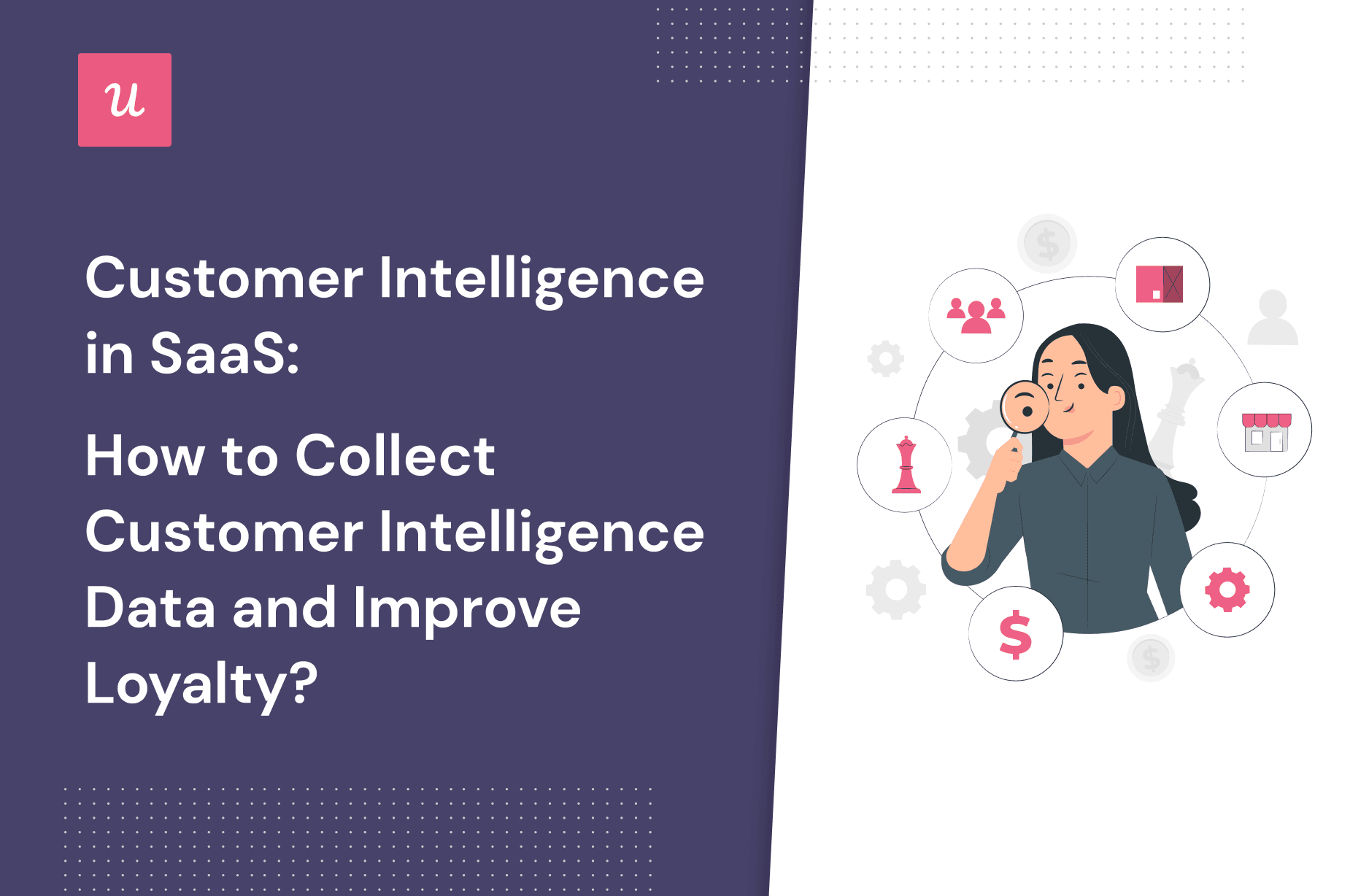
Customer Intelligence in SaaS: How To Collect Customer Intelligence Data and Improve Loyalty?
Did you know that customer intelligence (CI) data helps product managers dive deep into the customer journey and truly understand customers?
SaaS companies use CI data to design personalized customer experiences and better customer communications, increasing customer loyalty, retention, and lifetime value.
Want to learn how to collect and act on customer intelligence data? Keep reading this piece!
Try Userpilot Now
See Why 1,000+ Teams Choose Userpilot

What is customer intelligence (CI)
While marketing teams use CI data to understand customer personas and create hyper-personalized marketing campaigns, product teams use it to spot product friction and prioritize further product improvements and bug fixing.
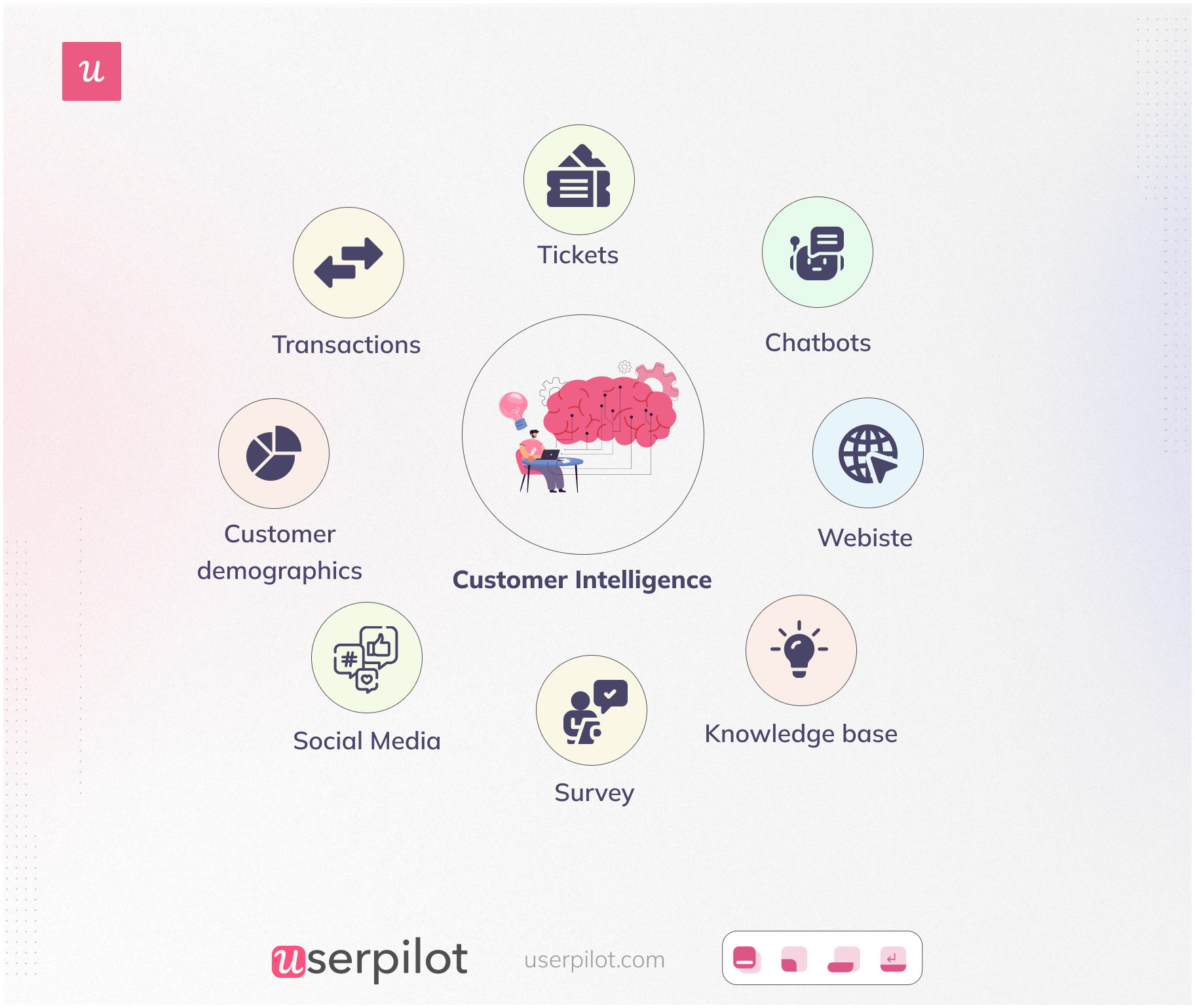
Customer data vs. customer intelligence vs. customer insights
These three terms may sound similar but contain different meanings and are used as explained below.
Let’s break it down!
Customer data
This is the raw data about customer behavior collected from any source — external or internal. Customer data can be anything from time on site to survey questions to in-app behavior or the NPS score. It doesn’t give you insights into customer behaviors, but it’s a starting point for any customer analysis, including customer intelligence.
For example, customer data for SaaS can include feature engagement in the app. Utilizing feature usage data will allow you to understand what features users use frequently or rarely. However, this information can only be useful if it is tied back to a specific user segment. In this way, you can identify user segments who have the potential to become power users but haven’t discovered key features yet.
See how you turned customer data into customer insights you can act on.
Customer intelligence
Customer intelligence is a result of customer analysis, where customer data serves as the input. If customer data can be a singular unit, customer intelligence is a set of data points collected from various sources, clustered and organized.
For example, users who came from the LinkedIn ad campaign and completed the onboarding flow but haven’t logged in for the last 14 days.
Combine data points from different sources to paint a complete picture of user behavior.
Customer insight
Customer insights are the actionable takeaways based on customer intelligence data. For example, you rolled out a new UI for a particular feature and launched an NPS survey to measure customer satisfaction. The result showed that 45% of the users who engaged with that feature are detractors. Then, you compared the result against the previous NPS score, which is 85% for promoters. The takeaway (aka customer insight): users don’t like the new UI.
Use customer insights to back up product tweaks and get buy-ins for new features.
What are the types of customer intelligence data?
Customer intelligence consists of internal and external customer data. By combining these data types, organizations can get a holistic view of their customers’ motivations and behaviors, which helps them improve customer experience.
Let’s break down what stands for internal and external CI.
Internal customer intelligence
Internal CI can be generated by any customer interaction inside the app or with your website. For example:
- Behavioral data;
- Support team interactions;
- Daily transactions and purchase history;
- Customer feedback;
- Sales team records;
- Results of sentiment analysis; and
- Any first-party data.
External customer intelligence
External CI can be collected from any resource of third-party data. This includes:
- Demographic data (Age, gender, education, social status, etc.);
- Geographic data (country, city, region, wealthy and poor districts);
- Market research surveys;
- Customer reviews on 3rd party sites such as G2 or Capterra;
Internal and external CI data are closely intertwined and rather cannot exist separately.
What are the benefits of customer intelligence in SaaS?
Any department within SaaS companies can benefit from CI insights. Marketing teams understand customer personas better and create hyper-personalized marketing campaigns. Product development teams use this data to spot product friction and prioritize product improvements and bug fixing.
But CI data usage does not stop there. Let’s look at a few examples.
Get a deeper understanding of your customers
This might sound corny, but understanding what your target audience is and what needs they have is imperative for SaaS businesses. This will help you create meaningful interactions with customers via any channel — marketing, sales, customer support, and so on.
Personalize the customer experience
Having detailed customer data allows you to personalize customer experiences at every touchpoint to speed up product adoption and boost customer satisfaction (=customer retention). For example, use micro surveys in the welcome flow to collect customer data and tailor the onboarding flow to use cases.
Forecast customer behavior
Predict future customer interactions and create relevant experiences based on customer intelligence insights. For example, you can spot that user segment X doesn’t engage with XYZ features. Design the secondary onboarding flow to get that segment to discover other product solutions.
Increase customer loyalty
Customer intelligence is a solid base for prioritizing your customers’ needs. CI data helps you identify issues and bottlenecks throughout the user journey and set fixing priorities.
For example, you may want to begin by fixing bugs that were reported by your top customers. Address those drawbacks and improve customer and brand loyalty.
How to collect customer intelligence data and increase loyalty with it?
As you’ve learned, there are plenty of ways to gather CI data from internal and external sources. Here, we’ll show you the 7 methods to collect internal data and derive insights into customer motivations, expectations, and needs.
Let’s start!
Use micro surveys in the welcome flow and create personalized experiences
Microsurveys in the welcome flow will help you capture important customer information right from the beginning. Examples include:
- Title
- Jobs to be done
- Company size
- Expectations
- Phone number, etc.
Get your customer success team to use the data to create a personalized onboarding flow tailored to use cases.
With our mobile SDK, you can create targeted onboarding flows using slideouts, carousels, and push notifications without writing extra code.
Here’s an example of a micro survey by Postfity. The company asks new signups to complete a short survey to understand the roles and tasks of newly attracted users. This data helps Postfity show the right onboarding flow to a particular customer group.
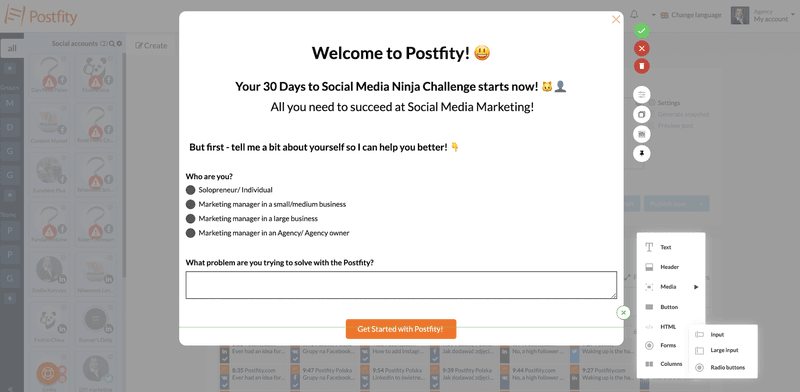
Use feature tagging to capture in-app customer interactions in real-time
In short, feature tagging is real-time monitoring of the number of users’ interactions. This helps product teams understand how customers behave in the app and what features they use more/less frequently. This, in turn, may signify that customers either don’t get the value of some features or need some guidance to figure out the best use cases.
You can use Userpilot’s feature tagging to record every interaction with features. What is also remarkable is that you can set up feature usage tracking code-free.
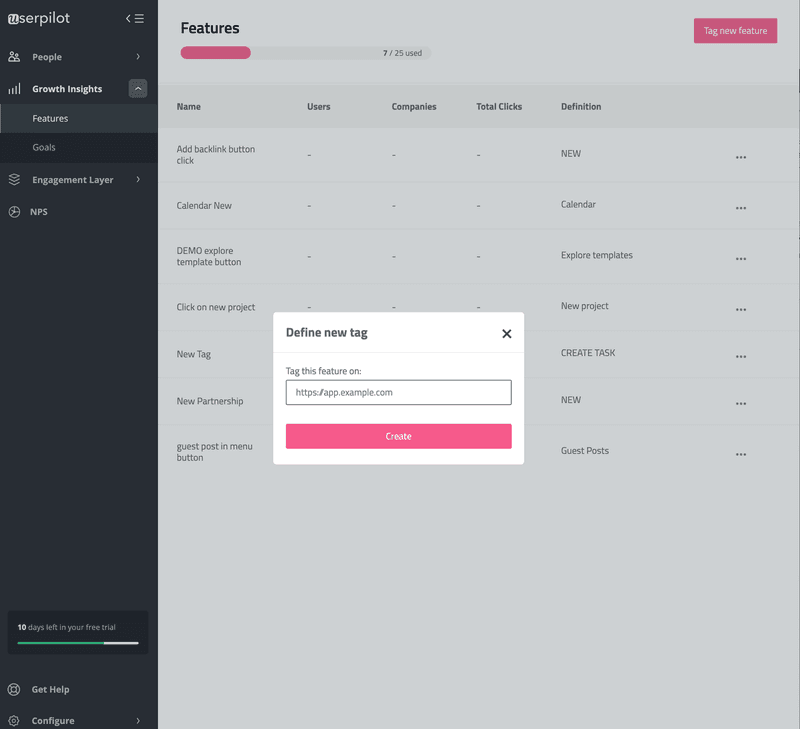
Segment customers by shared characteristics
After tracking feature usage you should segment customers by shared characteristics. This will help you organize data and detect common trends such as:
- Users with low NPS engaged with XYZ features;
- Users who skipped the onboarding checklist spend less time with the app and engage with fewer features;
- Customers who are aware of the X feature tend to buy extra credits, etc.
Then you can create personalized flows for that segments to boost engagement and retention.
With Userpilot, you can sort customers by different criteria to compare user segments and detect behavioral patterns.
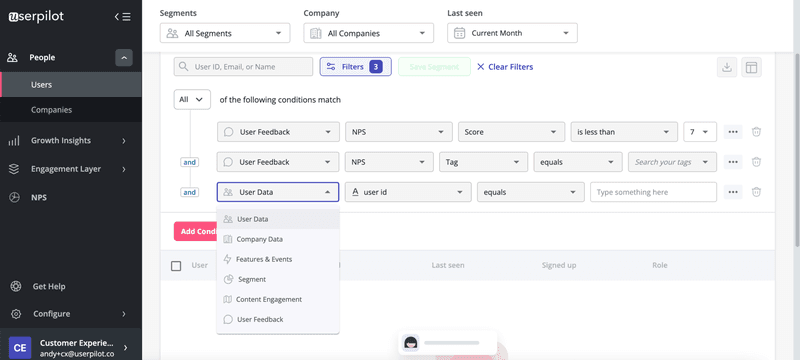
Use microsurveys across different touchpoints of the customer journey
Another way to collect customer insights is to send microsurveys after every major touchpoint in the customer journey. Let’s learn a few of them:
- A user purchased it for the first time. Trigger a microsurvey to rate the payment experience.
- A user completed the onboarding flow. Show a microsurvey to rate the usefulness of the onboarding flow on a scale of 1-10, where 1 is utter BS.
You can go even further and build follow-up qualitative questions to prompt users to expand on their scores (no matter whether the score is positive or negative, you want to know the Whys behind the numbers).
Use different types of surveys like CSAT, CES, onboarding, product-market fit, and NPS surveys to collect customer feedback.
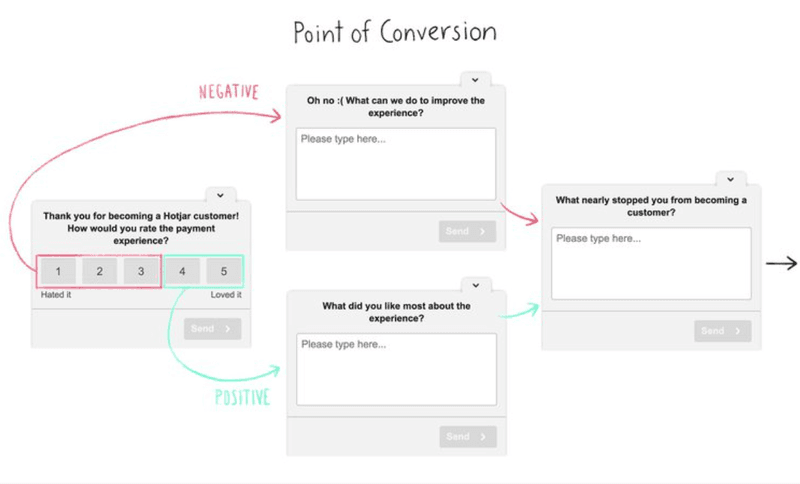
Conduct user interviews to make customers’ voices heard
Invite customers to take part in user interviews so they can discuss their experience with your product and provide honest feedback. Voice of the Customer is the best means to guide your product roadmap and ditch the guesswork.
There are two easy ways to recruit customers for interviews:
- Get the customer success team to send personalized invitations to specific user segments and conduct closed interviewing (=closed means non-public, not for everyone).
- Want to reach as many users? Build a slideout inviting users to join interviews. Check out this example below.
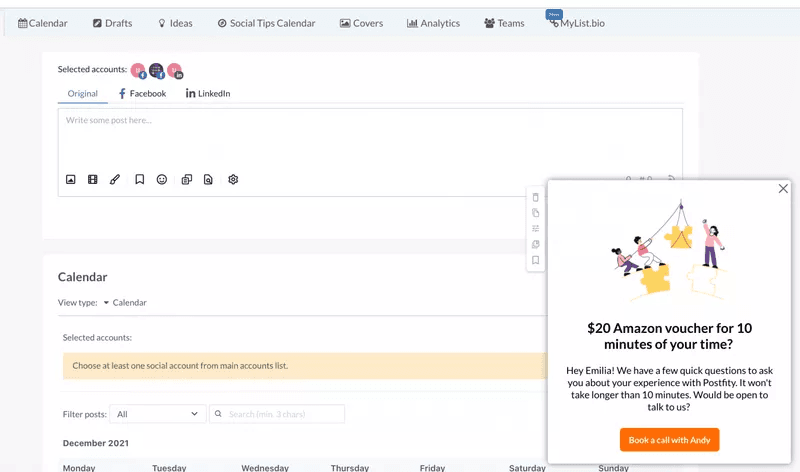
Send NPS surveys to measure customer loyalty and act on
Lastly, use NPS surveys to find out detractors, passives, and promoters. Find out what user segment gives the highest/lowest score.
You can use NPS surveys to measure overall customer satisfaction or trigger it to a particular feature. For example, set up an NPS survey to assess how happy customers are with a recently released feature.
Here’s how Slack employs NPS surveys to gauge customer loyalty. We love this example because of the personal touch that makes users feel special and important.
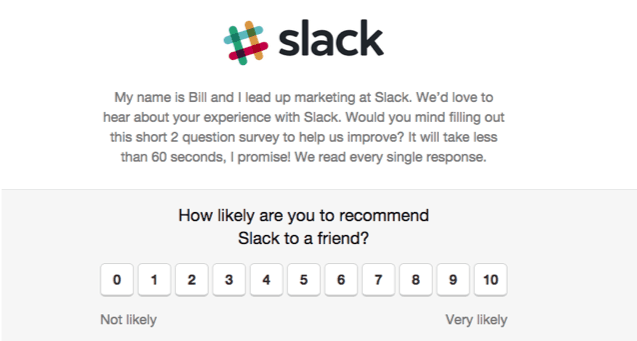
Add a follow-up question to an NPS survey to get qualitative data. For example, you can ask customers why they gave such a score.
Group NPS responses to get more insights into the given scores. Userpilot lets you group the NPS survey responses into separate themes so that you can learn what makes your customers loyal and what does not.
Thus, you may find that 80% of the detractors encounter bugs.
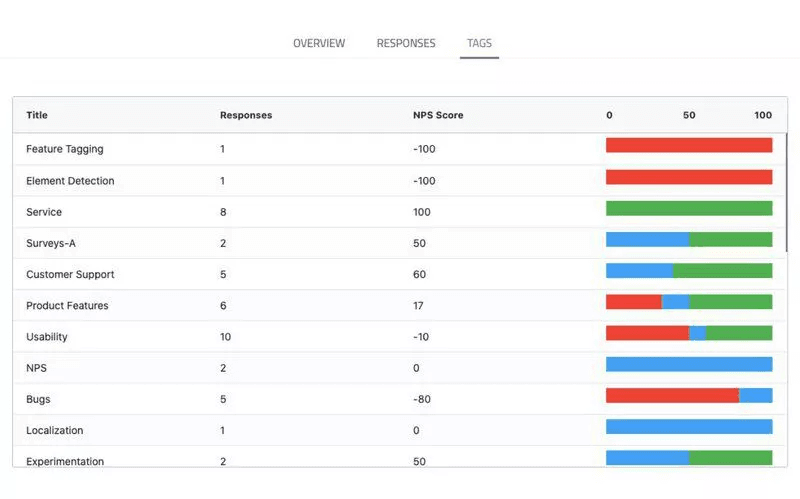
Use a customer intelligence platform to analyze collected data and make data-driven decisions
Imagine you’ve used all these methods to gather CI data + external sources. So what do you have? A pool of data points from different sources that you have to unify to make use of it. And that’s where a customer intelligence platform might help significantly.
Let’s jump to the last chapter where we talk about leading customer intelligence platforms.
Best customer intelligence platforms in 2022
You need access to two different platforms to collect and unify external and internal data. Find a breakdown of the most important features of customer intelligence platforms.
Userpilot
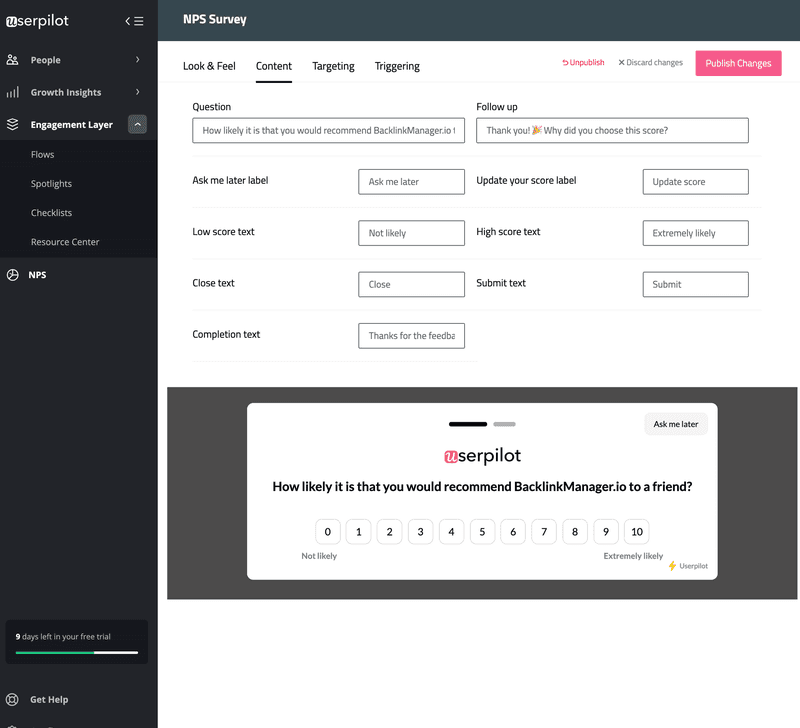
Userpilot is a versatile tool for gathering customer data right from the sign-up and throughout the entire customer journey. This tool is best for collecting and analyzing internal product-related data that you can use for extending and enhancing existing technologies.
Userpilot features include:
- Feature usage tracking — for identifying winning and losing features.
- Advanced customer segmentation — for comparing customer segments and finding behavioral trends.
- Dozens of microsurveys features — for measuring customer sentiment and customer satisfaction.
- Goals tracking — for analyzing the customer journey and detecting friction points.
Userpilot has integrations with Google Analytics, Segment, Amplitude, and Intercom to enrich customer data and derive more valuable customer insights!
Pricing:
- Get full access to Userpilot for the 14-day trial.
- Start working with Userpilot from $299/month (billed annually).
ActionIQ
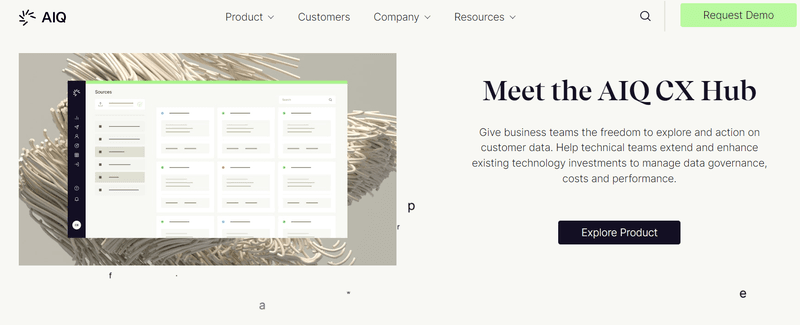
ActionIQ helps product marketers bring together external and internal CI data to make marketing campaigns insanely effective. This tool is best for enterprise-level companies with myriad data points to manage.
ActionIQ features you want to use:
- Audience segmentation — for building advanced lookalike audiences for Facebook and Google Ads and creating hyper-personalized ad campaigns.
- Journey orchestration — for planning and perfecting omnichannel marketing campaigns at every stage of the marketing funnel. Monitor the results, fine-tune budgets and find your best-performing campaign.
Pricing:
- There’s no public data on a free trial.
- Prices are available upon request.
Conclusion
Effective customer relationship management drives customer retention and business growth. If you want to level up customer satisfaction, make customer intelligence your ally.
Want to collect the necessary customer data with Userpilot and derive actionable insights? Book a personal demo to get started right away!






